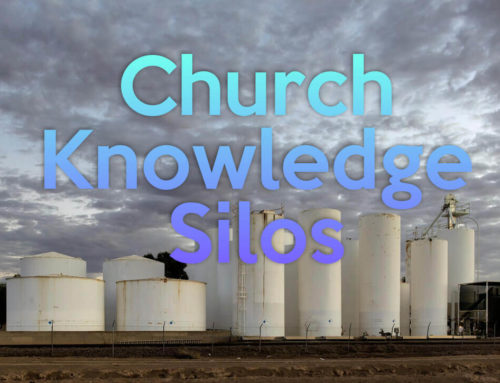There are three possible reasons that you are reading this article now. The first is that you are already aware of church SEO, and are just checking in to see if there is anything new or up to date that you need to know about. Welcome! We’re glad to have you here and hope to be helpful. You can go ahead and skip on down to the first bullet point. The second reason is because you’ve decided to get serious about evangelizing your community and reaching out to the millions of people who are searching for answers. Welcome! You’re taking one of the most important steps in growing a healthy church available! The third reason is because you keep hearing about SEO and figure it is just one of those things that you are supposed to do if you have a website. While that is all true, you need to go out and come back in with a better attitude. Go ahead we’ll wait….
Church SEO is THE most effective digital method for outreach, both in spreading the Gospel to unbelievers and to reaching out to new residents in your area or those who are looking for a church. And one of the best things about church SEO is that it ties the community, the convert, and church all together. The best thing for a new believer is to get plugged into a church.
So what exactly is SEO? Search Engine Optimization is a technique for attempting to get a website (in this case your church’s site) to appear higher and in more searches online. Unless things are really bad, you probably already rank #1 for your church’s name. That’s great for people who are already aware of your church and just can’t remember what the website is, but not much help for evangelization. Where does your church rank for “churches near me”? What about “Sunday schools near me”? A big part of this process is learning what people are searching for and how they are searching for it. For most churches, there is a big disconnect between the language used by staff and people who aren’t familiar with your church. For example, what is your children’s ministry called? Do you refer to it as “children’s ministry,” “children’s program,” “kids ministry,” “children’s church,” or “sunday school?” People new to an area who want to make sure their kids are going to church are more likely to search for “Sunday school” than all of the others combined. In fact they are more than 3 times likely to search for Sunday school than all of the others combined. When I first moved to Nashville, we searched for a church with a good Sunday School program. The top result was hindi. Where my parents live in Ohio, it is Christian Science. Both areas have a significant number of churches, some with large budgets and great websites and they aren’t reaching out to the community. Here is how they can change that.
-
Assume Success
Let’s imagine for a moment that all of our efforts work. Most churches, even those with terrible SEO probably occasionally get a visitor every now and again because of a Google search. Will that visitor know what to do? Where to go? Does the pastor address visitors who don’t know anyone? Visitor cards and hand shakes during the offering are great, but welcome desks that are easy to find are better. What if you get 2 – 5 new families a month from online searches (not unreasonable at all) are you able and ready to integrate them into your church community? Does the pastor know what the top landing pages are? Does the pastor know what people are searching for? If your church staff isn’t addressing the questions that brought people to your church, they will go somewhere that does.
-
Make Your Info Easy To Find
Does your site have your location, times, and contact info on the home page? Put it there! Also put it in the footer, on a contact page, and maybe in the header too! Don’t add a picture with your image, make sure that it is in text. And even better, make your address link to your church on Google Maps.
-
Make It Fast
Your site needs to be fast. Whatever speed it currently is, speed it up. Walmart did a study that found that for every 10th of a second faster their site load was the revenue went up 1%. People aren’t going to wait for your amazing sermon to load. If your site is REALLY slow, any improvement is going to help. If your site is already lightning fast, you will probably only be able to eke out a few improvements but even those will be worth it.
-
Install The Yoast Plugin (if you are using WordPress)
-
Get Listed
Links are super important to your site’s SEO. The more people linking to your site, the better. Get started by getting your facebook page verified. Next get your Google My Business account verified. Then make sure you have your site listed on these directories. If you don’t have the time, you can either go through them as time permits, or use a paid service like Moz Local.
-
Fill Out Your Google My Business Page
If you’ve already set up and verified your Google My Business page, then you are half done. Now you need to add as many photos as you can and a few videos to go along with it. Next create a post. It doesn’t have to be long or even super well written. The easiest way to go is to just write about some upcoming event or a current sermon series. Do this roughly once a month.
-
Create Quality Content
As we mentioned before, getting links to your website is extremely important for SEO. But people aren’t likely to link to your site for no reason. Instead, give them something worth sharing! Shareable content is content that is useful enough to make the person sharing it look good, smart, funny, or in the know. Great content ideas for churches include local area guides for parents (i.e. things to do with toddlers, rainy day activities, book readings, etc). The more quality content you have the more people will want to check it out. Sermons are good, but they are most likely just going to be read/viewed/listened to by someone who missed Sunday’s service. Follow up content to sermons is going to be more helpful and engaging.
This is the most popular SEO plugin for WordPress for a reason. It takes care of a lot of little things and coaches you through a lot of other things.
Obviously some of these steps are easier than others, but that’s true of ALL evangelism. You can’t just walk into a coffee shop and expect a stranger to sit across from you and ask how they can be saved. The good news is that the field is very ready for the harvest. There are so many people asking questions about God and Jesus online and so afraid to ask in person. And there are so few churches that are actively working on their SEO so that a little effort goes a very long way.
Have you put some time into your church’s SEO? What are some of your tips and suggestions for someone just starting out? Is there something we forgot or that should be changed? This isn’t an in depth guide, and you can subscribe to stay up to date, but in the meantime, let’s start sharing the Gospel!






